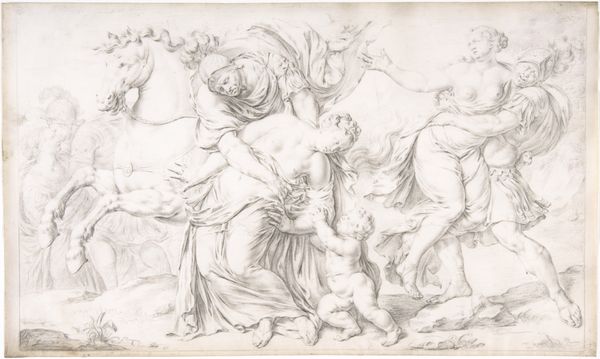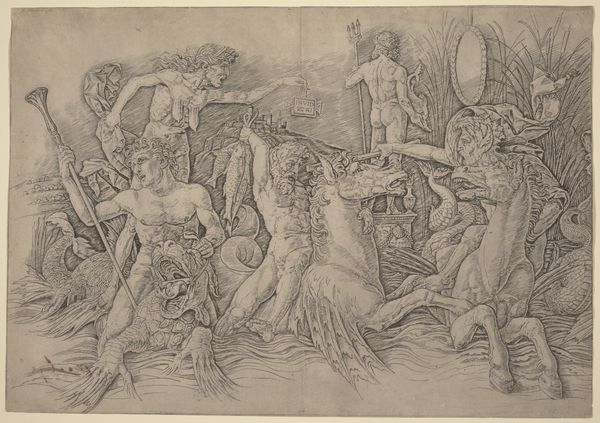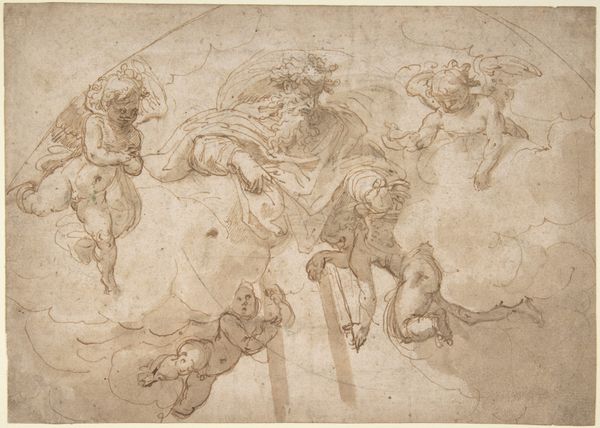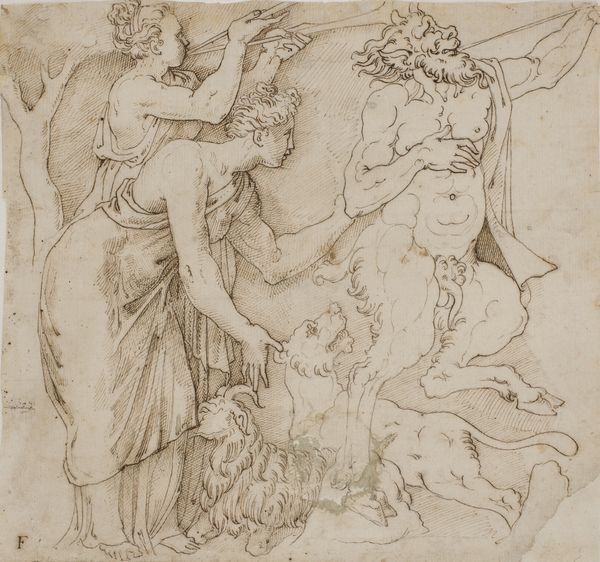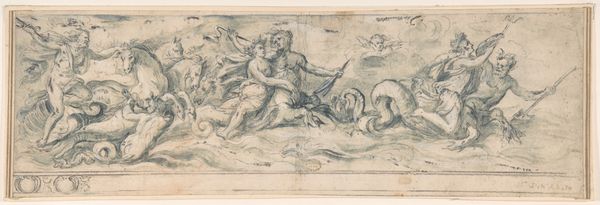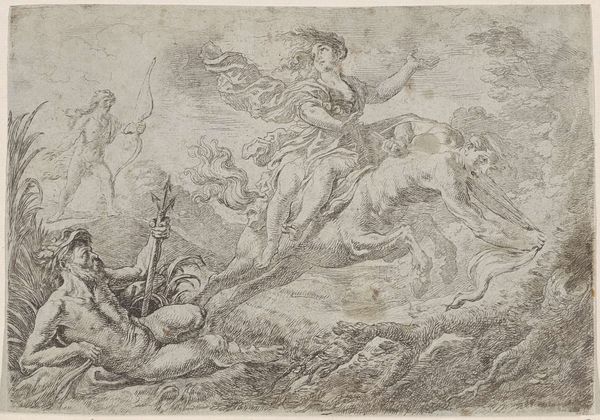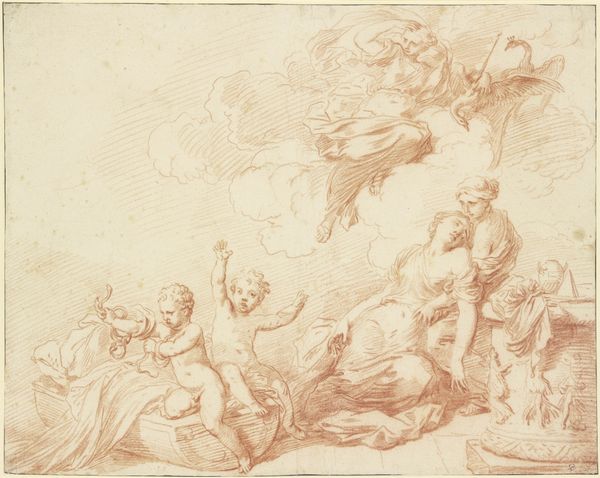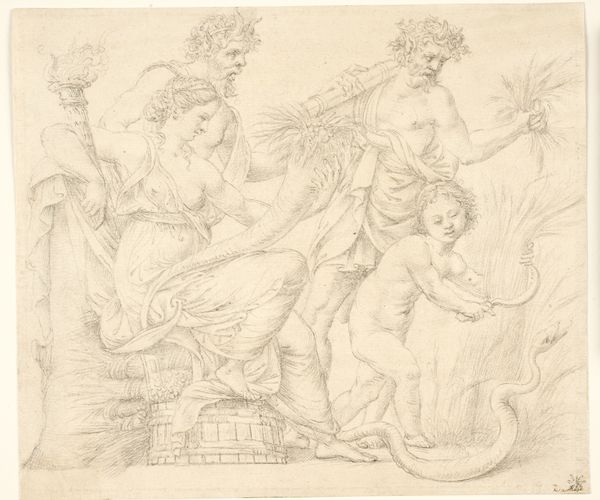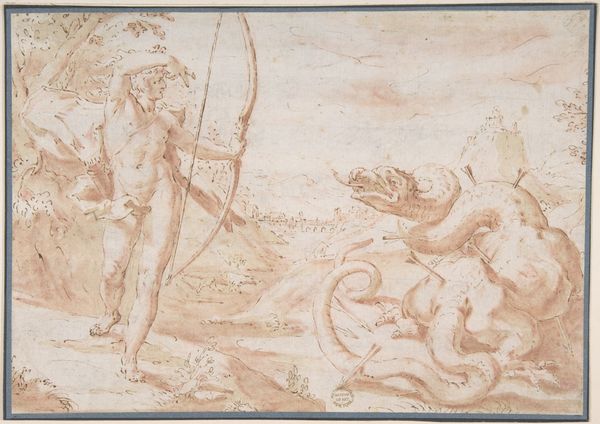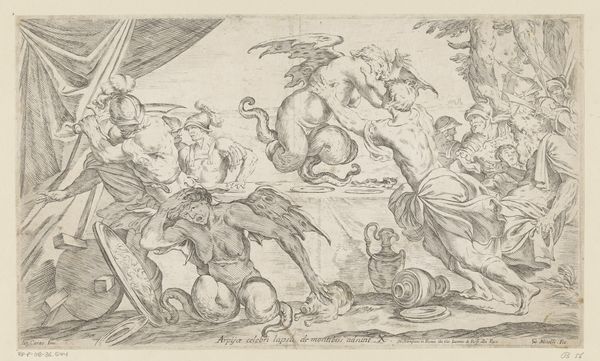
drawing, dry-media
#
drawing
#
narrative-art
#
baroque
#
pencil sketch
#
landscape
#
figuration
#
dry-media
#
ink drawing experimentation
#
portrait drawing
#
pencil work
#
pencil art
Dimensions: height 385 mm, width 515 mm
Copyright: Rijks Museum: Open Domain
Curator: Looking at this drawing, "Quos Ego," which dates back to sometime between 1700 and 1800, I am struck by how its lines try to convey immense, barely contained power. What’s your immediate take? Editor: Restrained chaos. All the figures and the ship are drawn in the same ochre ink that almost camouflages them, creating a sense of underlying turmoil just about to breach the surface. It gives an unsettlingly epic feel to it. Curator: I agree. It's essentially an exercise in baroque visual rhetoric, presenting Neptune, ruler of the seas, his authority and the turbulent world he governs. Even in a relatively simple dry-media drawing like this, we can feel the weight of inherited symbols and power dynamics at play. The trident, the horses—all carefully selected imagery, deeply rooted. Editor: Rooted, but not fixed. It’s difficult not to see echoes of colonial power here. Neptune's dominance is staged, almost performative; those horses seem less symbols of divine right and more a visual expression of unrestrained, exploitative power. The title itself is foreboding. "Quos Ego"—"Whom I..." followed by a threat. Curator: An interesting angle! I perceive it a bit differently. I see the scene tapping into primal anxieties. The sea, the untamed power of nature, made manifest in a god-like figure struggling to maintain order. The image plays into enduring archetypes and warnings. Neptune embodies raw, unbridled masculine force, yet he is actively wrestling to keep his kingdom—and therefore himself—intact. It speaks to our inherent fears of chaos overwhelming order. Editor: Perhaps. But let's not ignore how that "order" often reinforces unequal systems. A sea god holding dominion evokes imperial ambition. And to consider these ambitions absent of real-world impact—environmental damage, forced migration—that feels tone-deaf. Curator: Of course, it is imperative to examine any artwork through different theoretical lenses. It adds depth, complexity, especially for those less acquainted with Baroque symbolism. Editor: Agreed. By grappling with context and consequences, hopefully, we start more conversations than we conclude. Curator: A fitting objective indeed, offering pathways, then, instead of boundaries, when considering imagery with centuries of embedded intent.
Comments
No comments
Be the first to comment and join the conversation on the ultimate creative platform.
